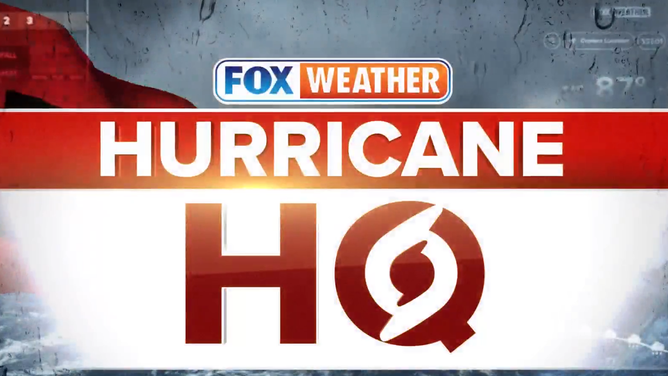Bryan Norcross: Watching western Caribbean while rest of the tropics remain calm
Tropical disturbances that originated over Africa are lined up across the Atlantic, but as is usually the case this time of year, Saharan dust is in control.

FOX Weather is your Hurricane HQ, streaming free 24/7.
(FOX Weather)
Updated at 9 a.m. ET on Tuesday, June 25
A weak tropical disturbance just moving into the Caribbean islands will arrive in the western Caribbean at the end of the week. Computer forecast models indicate that a bubble of conducive atmosphere might allow the disturbance to develop, at least briefly. The National Hurricane Center is putting the chances in the low category at this point. The window of opportunity looks short.
Tropical disturbances that originated over Africa are lined up across the Atlantic, but as is usually the case this time of year, Saharan dust is in control. In fact, a significant dust outbreak just started, which will bring milky skies to many of the Caribbean islands this week. The dust is forecast to blanket South Florida and perhaps reach as far as Texas by the weekend.

This graphic shows details on a tropical disturbance in the Atlantic Ocean.
(FOX Weather)
A strong area of high pressure is forecast to be sitting over the southern U.S. at the end of the week, which should hold the disturbance or whatever it becomes well to the south. Heavy rain will, of course, be possible in Central America and southern Mexico, depending on what develops.
The strong and persistent winds blowing across the Gulf of Mexico associated with Tropical Storm Alberto and last weekend's disturbance have stirred up the Gulf water. As a result, the water temperature is now below average across most of the Gulf.
It’s unlikely to last, however. A period of light winds and hot weather will heat the surface of the water as fast as it cooled. The Gulf water is especially responsive to changes in the weather.
The eastern Atlantic has cooled some as well. The wind has also increased, stirring up the water there. Closer to the islands and across the Caribbean, however, the water continues to be warmer than average.
In the Pacific, the El Niño is over and the La Niña has not formed yet. So, we are in a La Nada state. The expectation of a hurricane-enhancing La Niña was one of the key factors in the hyperactive hurricane forecasts. La Niña years are normally among the busiest, while La Nada years can swing either way. With no strong forcing from the Pacific, other atmospheric factors control how many Atlantic storms form.
All this adds uncertainty to what's going to happen this hurricane season, of course. So we stay prepared and stay aware.
Key points expanded on by Chat GPT 4.0 (edited)

This graphic shows the Saharan dust tracker.
(FOX Weather)
What is Saharan dust and how does it affect tropical weather?
Saharan dust consists of tiny particles from the Sahara Desert that are lifted into the atmosphere by strong winds. This dust can travel thousands of miles across the Atlantic, reaching as far as the Americas. When Saharan dust is present in the atmosphere, it creates a dry and stable layer, making it difficult for thunderstorms to organize and grow into tropical storms or hurricanes. This phenomenon is called the Saharan Air Layer (SAL).
How do tropical disturbances develop?
Tropical disturbances, often starting as clusters of thunderstorms, can develop into more organized systems like tropical depressions, storms or hurricanes under the right conditions. Key factors for development include warm ocean-water temperatures, conducive upper winds and high humidity in the middle of the atmosphere. When these conditions are met, the disturbances can consolidate and strengthen as they move over the ocean.
What is La Nada and its impact on hurricane season?
La Nada, a state where neither El Niño nor La Niña is present, can influence hurricane activity in unpredictable ways. During La Niña, we typically see more hurricanes due to a generally more conducive wind regime over the Atlantic. La Nada years can be variable, sometimes producing above-average or below-average hurricane seasons. The lack of a strong macro influence from either El Niño or La Niña means other atmospheric factors, such as the position of the high-pressure systems and ocean water temperatures, play a larger role in determining the number and intensity of storms.
Editor's note: Portions of this story were written using Artificial Intelligence.